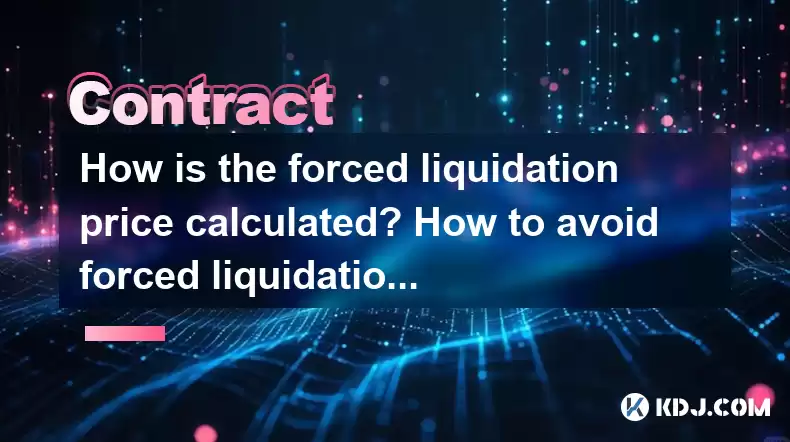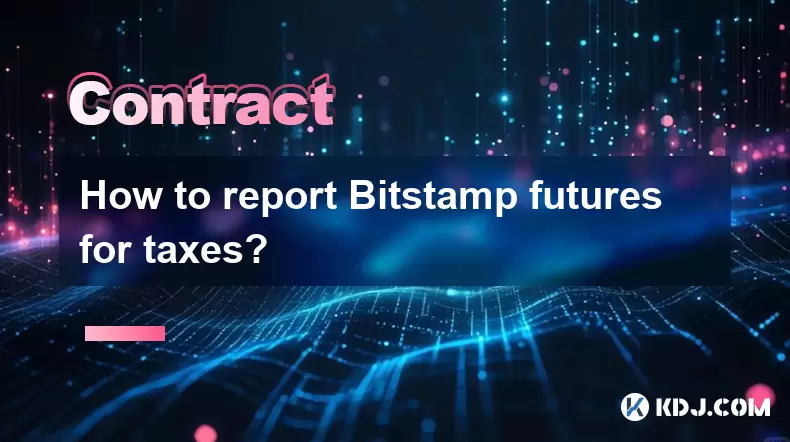-
 Bitcoin
Bitcoin $115000
0.12% -
 Ethereum
Ethereum $3701
4.50% -
 XRP
XRP $3.081
2.99% -
 Tether USDt
Tether USDt $0.0000
-0.01% -
 BNB
BNB $767.9
1.45% -
 Solana
Solana $169.5
3.13% -
 USDC
USDC $0.9999
0.01% -
 Dogecoin
Dogecoin $0.2106
4.30% -
 TRON
TRON $0.3334
1.62% -
 Cardano
Cardano $0.7564
2.54% -
 Stellar
Stellar $0.4165
0.76% -
 Hyperliquid
Hyperliquid $38.75
0.25% -
 Sui
Sui $3.593
3.00% -
 Chainlink
Chainlink $17.08
3.59% -
 Bitcoin Cash
Bitcoin Cash $573.6
4.35% -
 Hedera
Hedera $0.2508
-0.84% -
 Avalanche
Avalanche $23.07
6.46% -
 Ethena USDe
Ethena USDe $1.001
-0.02% -
 Litecoin
Litecoin $120.8
8.17% -
 UNUS SED LEO
UNUS SED LEO $8.943
-0.32% -
 Toncoin
Toncoin $3.400
-5.60% -
 Shiba Inu
Shiba Inu $0.00001255
1.54% -
 Uniswap
Uniswap $9.908
6.32% -
 Polkadot
Polkadot $3.718
2.10% -
 Monero
Monero $303.0
-0.74% -
 Dai
Dai $0.9999
-0.02% -
 Bitget Token
Bitget Token $4.392
0.91% -
 Cronos
Cronos $0.1403
6.31% -
 Pepe
Pepe $0.00001076
1.13% -
 Aave
Aave $267.2
1.80%
How is the forced liquidation price calculated? How to avoid forced liquidation of positions?
Forced liquidation in crypto trading occurs when a trader's equity falls below the maintenance margin, prompting automatic position closure to prevent further losses.
Apr 28, 2025 at 08:43 am

Understanding Forced Liquidation in Cryptocurrency Trading
In the world of cryptocurrency trading, forced liquidation is a critical concept that traders need to understand. It occurs when a trader's position is automatically closed by the exchange to prevent further losses when the account's equity falls below the maintenance margin requirement. This process is designed to protect both the trader and the exchange from potential negative account balances.
Calculation of Forced Liquidation Price
The forced liquidation price is calculated based on several factors including the initial margin, the maintenance margin, and the current market price of the asset. Here's a detailed breakdown of how this calculation is typically performed:
- Initial Margin: This is the amount of money required to open a position. It acts as a deposit to secure the trade.
- Maintenance Margin: This is the minimum amount of equity that must be maintained in the account to keep the position open. If the account equity falls below this level, the position is subject to liquidation.
- Position Size: The total value of the position being traded.
- Leverage: The ratio of the trader's funds to the size of the position. Higher leverage increases the risk of liquidation.
The formula to calculate the forced liquidation price can vary slightly between exchanges, but a common approach is as follows:
[ \text{Forced Liquidation Price} = \frac{\text{Entry Price} \times (1 \pm \text{Leverage}^{-1}) - \text{Maintenance Margin}}{\text{Leverage}^{-1}} ]
Where:
- Entry Price is the price at which the position was opened.
- Leverage is the leverage used for the position.
- Maintenance Margin is the required maintenance margin.
For a long position, the minus sign is used, and for a short position, the plus sign is used.
Factors Affecting Forced Liquidation Price
Several factors can influence the forced liquidation price:
- Volatility: High volatility in the market can lead to rapid changes in the liquidation price.
- Leverage: Higher leverage increases the risk of liquidation as it amplifies both gains and losses.
- Position Size: Larger positions require more margin and can be more susceptible to liquidation.
- Market Conditions: Sudden market movements can trigger mass liquidations, affecting the overall market dynamics.
Strategies to Avoid Forced Liquidation
To avoid forced liquidation, traders can employ several strategies:
- Use Lower Leverage: By using lower leverage, traders can reduce the risk of their positions being liquidated. Lower leverage means less potential profit but also less risk of significant losses.
- Set Stop-Loss Orders: A stop-loss order can automatically close a position when the price reaches a certain level, helping to limit losses and prevent liquidation.
- Monitor Margin Levels: Regularly checking the margin level and ensuring it remains above the maintenance margin can help traders avoid liquidation.
- Diversify Positions: Spreading investments across different assets can reduce the risk of a single position causing liquidation.
- Use Risk Management Tools: Many trading platforms offer tools like trailing stops and take-profit orders that can help manage risk and prevent liquidation.
Practical Steps to Implement These Strategies
Here are detailed steps to implement the strategies mentioned above:
Using Lower Leverage:
- When opening a new position, select a lower leverage ratio. For example, instead of using 100x leverage, consider using 10x or 20x.
- Calculate the potential liquidation price with the chosen leverage to ensure it aligns with your risk tolerance.
Setting Stop-Loss Orders:
- Navigate to the trading interface of your chosen platform.
- Select the position for which you want to set a stop-loss.
- Enter the desired stop-loss price, ensuring it is set at a level that would prevent liquidation but still allow for market fluctuations.
- Confirm the stop-loss order.
Monitoring Margin Levels:
- Regularly check the account balance and margin level on your trading platform.
- Use the platform's margin calculator to understand how different market movements could affect your margin level.
- Adjust your positions or add more funds if the margin level approaches the maintenance margin.
Diversifying Positions:
- Instead of concentrating all your funds in one asset, allocate your capital across multiple cryptocurrencies.
- Consider different types of assets, such as stablecoins, to balance your portfolio and reduce overall risk.
Using Risk Management Tools:
- Explore the risk management features available on your trading platform, such as trailing stops and take-profit orders.
- Set up a trailing stop to automatically adjust the stop-loss level as the market moves in your favor.
- Use take-profit orders to lock in profits at predetermined levels, reducing the risk of holding onto a position too long.
Understanding the Impact of Market Movements
Market movements can significantly impact the likelihood of forced liquidation. Sudden price drops or spikes can trigger liquidations, especially in highly leveraged positions. Traders need to be aware of market trends and news that could affect their positions.
- Price Gaps: If the market opens with a significant gap, positions can be liquidated before traders have a chance to react.
- Liquidity: Low liquidity can exacerbate price movements, increasing the risk of liquidation.
- Order Book Depth: A shallow order book can lead to rapid price changes, increasing the risk of liquidation.
Real-World Examples of Forced Liquidation
To illustrate the concept of forced liquidation, consider the following examples:
- Example 1: A trader opens a long position on Bitcoin with 50x leverage at $30,000. The maintenance margin is set at 0.5% of the position size. If the price of Bitcoin drops to $29,400, the position could be liquidated.
- Example 2: A trader opens a short position on Ethereum with 20x leverage at $2,000. The maintenance margin is set at 1% of the position size. If the price of Ethereum rises to $2,100, the position could be liquidated.
These examples highlight how leverage and market movements can lead to forced liquidation.
Frequently Asked Questions
Q1: Can forced liquidation result in a negative account balance?
A1: Most reputable exchanges have mechanisms in place to prevent negative account balances. However, in rare cases, extreme market volatility can lead to situations where the liquidation price is not reached in time, potentially resulting in a negative balance. It's crucial to use exchanges with robust risk management systems.
Q2: How does the choice of exchange affect the risk of forced liquidation?
A2: Different exchanges have different margin requirements and liquidation policies. Some exchanges may offer more favorable conditions, such as lower maintenance margins or more flexible liquidation thresholds. It's important to research and choose an exchange that aligns with your trading strategy and risk tolerance.
Q3: Can I reopen a position after it has been liquidated?
A3: Yes, after a position is liquidated, you can reopen it if you have sufficient funds in your account. However, it's important to reassess your trading strategy and risk management approach to avoid repeated liquidations.
Q4: How does the size of the position affect the risk of forced liquidation?
A4: Larger positions require more margin and can be more susceptible to liquidation, especially if the market moves against the position. It's important to carefully consider the size of your positions relative to your account balance and risk tolerance.
Disclaimer:info@kdj.com
The information provided is not trading advice. kdj.com does not assume any responsibility for any investments made based on the information provided in this article. Cryptocurrencies are highly volatile and it is highly recommended that you invest with caution after thorough research!
If you believe that the content used on this website infringes your copyright, please contact us immediately (info@kdj.com) and we will delete it promptly.
- Cryptocurrency, Altcoins, and Profit Potential: Navigating the Wild West
- 2025-08-04 14:50:11
- Blue Gold & Crypto: Investing Disruption in Precious Metals
- 2025-08-04 14:30:11
- Japan, Metaplanet, and Bitcoin Acquisition: A New Era of Corporate Treasury?
- 2025-08-04 14:30:11
- Coinbase's Buy Rating & Bitcoin's Bold Future: A Canaccord Genuity Perspective
- 2025-08-04 14:50:11
- Coinbase's Buy Rating Maintained by Rosenblatt Securities: A Deep Dive
- 2025-08-04 14:55:11
- Cryptos, Strategic Choices, High Returns: Navigating the Meme Coin Mania
- 2025-08-04 14:55:11
Related knowledge

Why is my Bitstamp futures position being liquidated?
Jul 23,2025 at 11:08am
Understanding Futures Liquidation on BitstampFutures trading on Bitstamp involves borrowing funds to open leveraged positions, which amplifies both po...

How to report Bitstamp futures for taxes?
Jul 30,2025 at 08:35am
Understanding Bitstamp Futures and Taxable EventsWhen trading Bitstamp futures, it’s essential to recognize that these financial instruments are treat...

Does Bitstamp offer inverse contracts?
Jul 23,2025 at 01:28pm
Understanding Inverse Contracts in Cryptocurrency TradingIn the realm of cryptocurrency derivatives, inverse contracts are a specific type of futures ...

What is the difference between futures and perpetuals on Bitstamp?
Jul 27,2025 at 05:08am
Understanding Futures Contracts on BitstampFutures contracts on Bitstamp are financial derivatives that allow traders to speculate on the future price...

How to find your Bitstamp futures trade history?
Jul 23,2025 at 08:07am
Understanding Bitstamp and Futures Trading AvailabilityAs of the current state of Bitstamp’s service offerings, it is critical to clarify that Bitstam...

Can I use a trailing stop on Bitstamp futures?
Jul 23,2025 at 01:42pm
Understanding Trailing Stops in Cryptocurrency TradingA trailing stop is a dynamic type of stop-loss order that adjusts automatically as the price of ...

Why is my Bitstamp futures position being liquidated?
Jul 23,2025 at 11:08am
Understanding Futures Liquidation on BitstampFutures trading on Bitstamp involves borrowing funds to open leveraged positions, which amplifies both po...

How to report Bitstamp futures for taxes?
Jul 30,2025 at 08:35am
Understanding Bitstamp Futures and Taxable EventsWhen trading Bitstamp futures, it’s essential to recognize that these financial instruments are treat...

Does Bitstamp offer inverse contracts?
Jul 23,2025 at 01:28pm
Understanding Inverse Contracts in Cryptocurrency TradingIn the realm of cryptocurrency derivatives, inverse contracts are a specific type of futures ...

What is the difference between futures and perpetuals on Bitstamp?
Jul 27,2025 at 05:08am
Understanding Futures Contracts on BitstampFutures contracts on Bitstamp are financial derivatives that allow traders to speculate on the future price...

How to find your Bitstamp futures trade history?
Jul 23,2025 at 08:07am
Understanding Bitstamp and Futures Trading AvailabilityAs of the current state of Bitstamp’s service offerings, it is critical to clarify that Bitstam...

Can I use a trailing stop on Bitstamp futures?
Jul 23,2025 at 01:42pm
Understanding Trailing Stops in Cryptocurrency TradingA trailing stop is a dynamic type of stop-loss order that adjusts automatically as the price of ...
See all articles

























































































